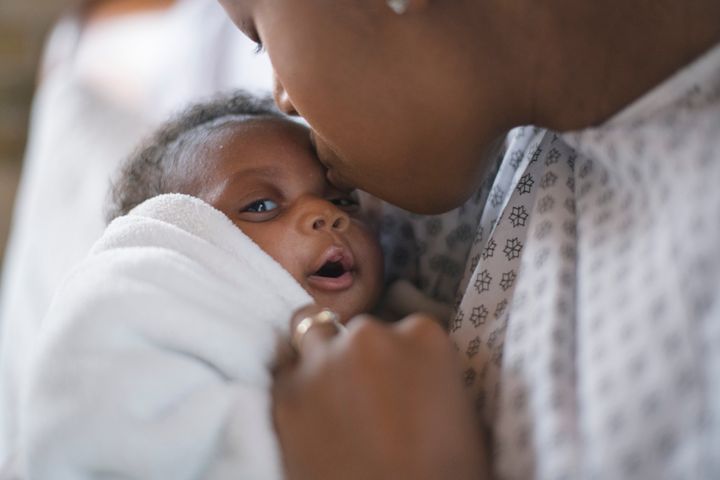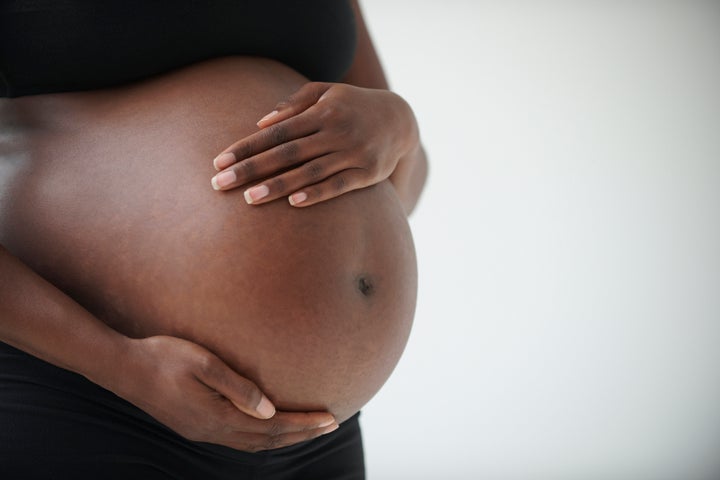This story is part of Black Ballad’s takeover of HuffPost UK, a week-long series by Black women on parenting, family, and our post-Covid future.
When I tell people I found the sperm donor for my child on social media, they visibly cringe. It’s only when I take the time to explain the shortage of Black donors in sperm banks that their judgement starts to wane. I went through the process three years ago, but it’s sad to see that since then, little has changed.
I approached finding a donor much like online dating. To optimise my chances, I selected a bank that boasted being Britain’s “largest provider of donor sperm”. I made a list of traits I’d like the donor to have – and a few dealbreakers. I wanted a donor who was Black like me, because I’d be raising the child alone and didn’t think I’d be able to provide the right support for the child’s other culture.
The sperm bank’s website invited me to filter my search according to race, hair colour, eye colour, and height. When I selected Black for race and pressed enter, I was told that “unfortunately”, my search didn’t come up with any options. Hoping this was an issue with that particular bank, I tried two other British sperm banks – but the result was equally disappointing.
One bank came back to me with two potential donors. I rang a few days later to ask for more information, but one of them was no longer available as he’d met the 10-family limit each donor is allowed to create. The other had requested his sperm only be given to heterosexual couples so, as a single woman looking for a donor, I wasn’t eligible.

I had no choice but to widen my search to Europe. Many American banks aren’t compliant with the British Human Fertilisation and Embryology Authority (HFEA) regulations and can’t be used by our clinics, but I was surprised by the many options for Black donors available at Danish sperm banks.
Their detailed profiles included psychological assessments, voice notes from the donor and childhood photos. I selected a donor and immediately began the process. But, I soon realised it was significantly more expensive to buy sperm from Denmark (£2,000 - £2,800 as opposed to £850 - £1,150).
After my two rounds of IVF, I couldn’t afford to continue the process. This is how I ended up looking for a donor elsewhere.
Private donation isn’t recommended by the HFEA, but I had no other options. I visited donor introduction sites and found the same lack of choice – or that donors were looking to co-parent. When I put my dilemma to other single mothers I followed on social media, they suggested looking for a sperm donor group on Facebook.
There, I found a niche group for Black donors where women openly discussed their experiences – calling out deceitful donors, for example. After months of lurking, I saw a profile of a donor I liked and was able to chat to a mother who’d used him to conceive her daughter before starting the process with him.

I was lucky – this private process is still high risk. These donors don’t always have the full medical work-up of a clinical donor. Tests for sexually transmitted diseases can be arranged, but genetic screening and psychological evaluations are difficult to organise.
Certain sexually transmitted infections, such as HIV, may not be detected initially if tested at the wrong time – with a sperm bank, the sample would be frozen and only released when a second test confirmed no infection. Those using informal donors are often using fresh sperm and don’t have this luxury.
“The limited choice of properly processed sperm donors has led many women to look to high-risk sources.”
When choosing these risky options, women and their future children are also opened up to uncertain future relationships and potential legal battles. Not all men offering to donate are sincere and several women who have written about this on online forums have found themselves in uncomfortable situations when they meet their donor to collect the sample. The shame and secrecy associated with the use of unregulated websites adds to the blanket of silence.
The population of the UK is 13 times bigger than Denmark (67 million versus five million) and the proportion of immigrants is similar (8% and 10% respectively), but there has been little research done to understand why there are so few Black donors in the UK, compared to Denmark, and what can be done to motivate men to donate their sperm.
This lack of research continues to expose women, particularly Black women and their children, to unnecessary risks. Nor can we continue to rely on Denmark for Black donors when it’s unclear how Brexit will affect customs and trade.
A homegrown solution is required now, more than ever.
This article was commissioned for HuffPost UK by Black Ballad, the lifestyle platform that tells stories of human experience through the eyes of Black British women and elevates their voices. If you would like to read more, become a Black Ballad member to get unlimited access to content, events and discounts, and to connect to its community of like-minded women.

